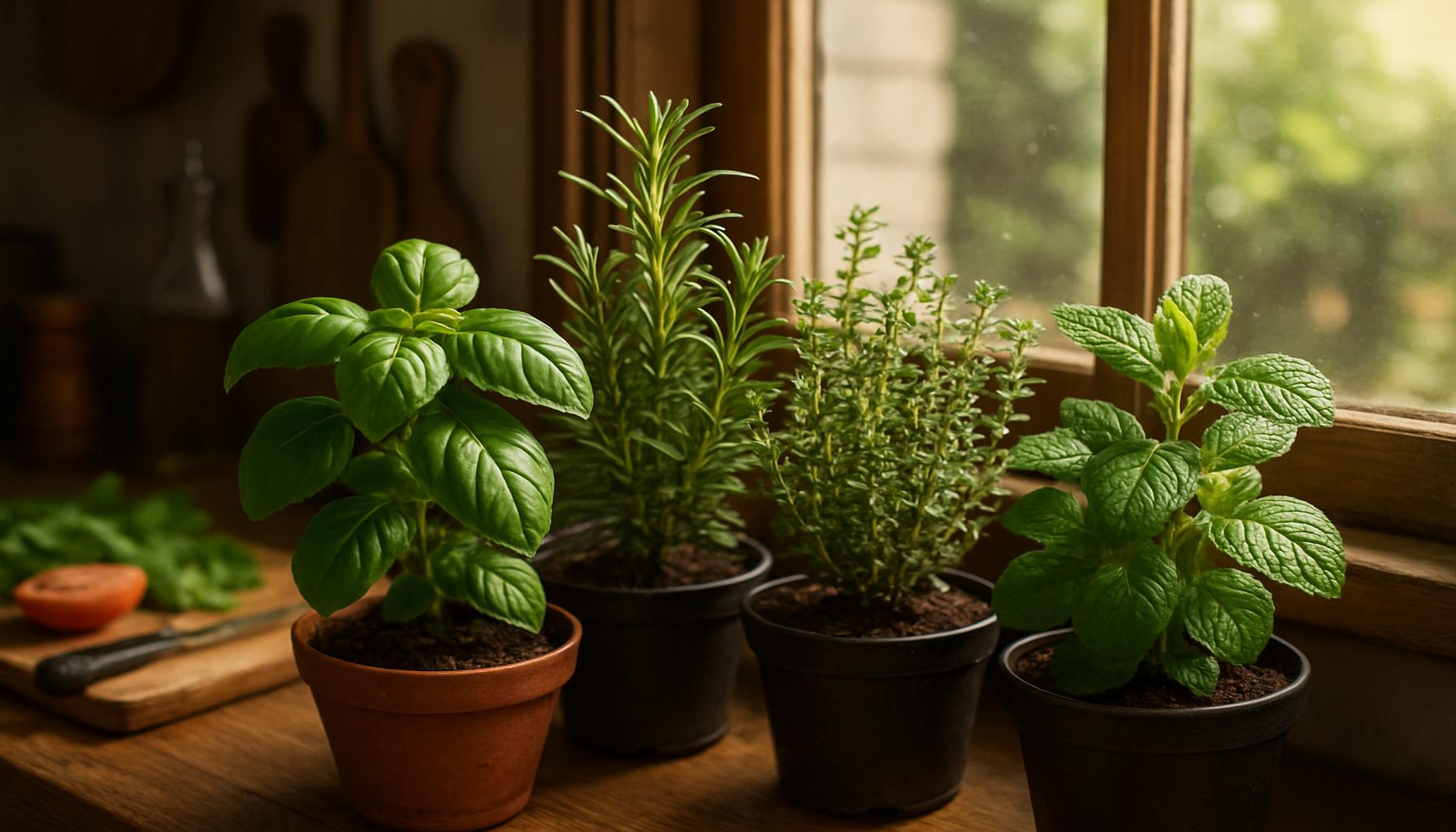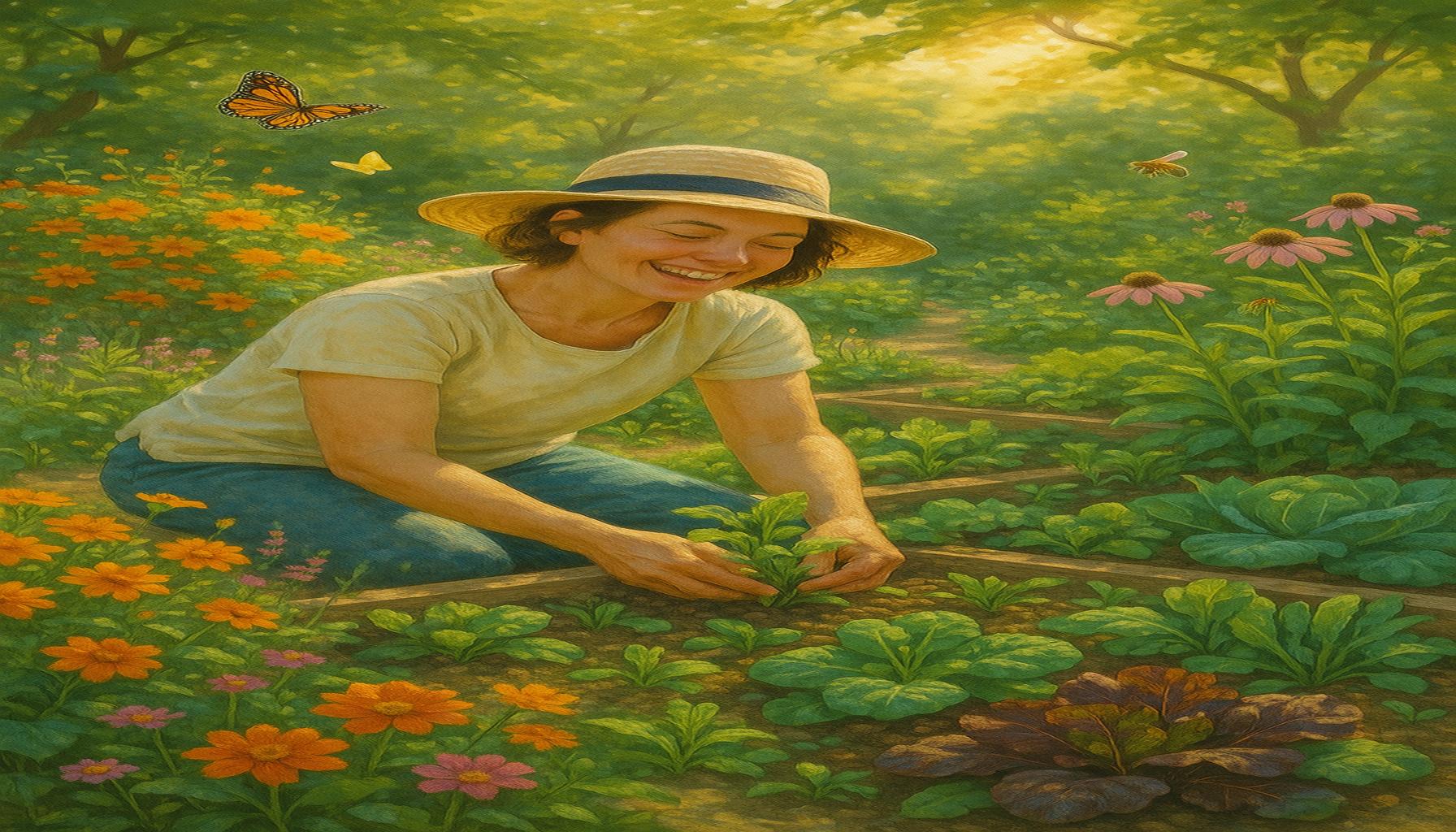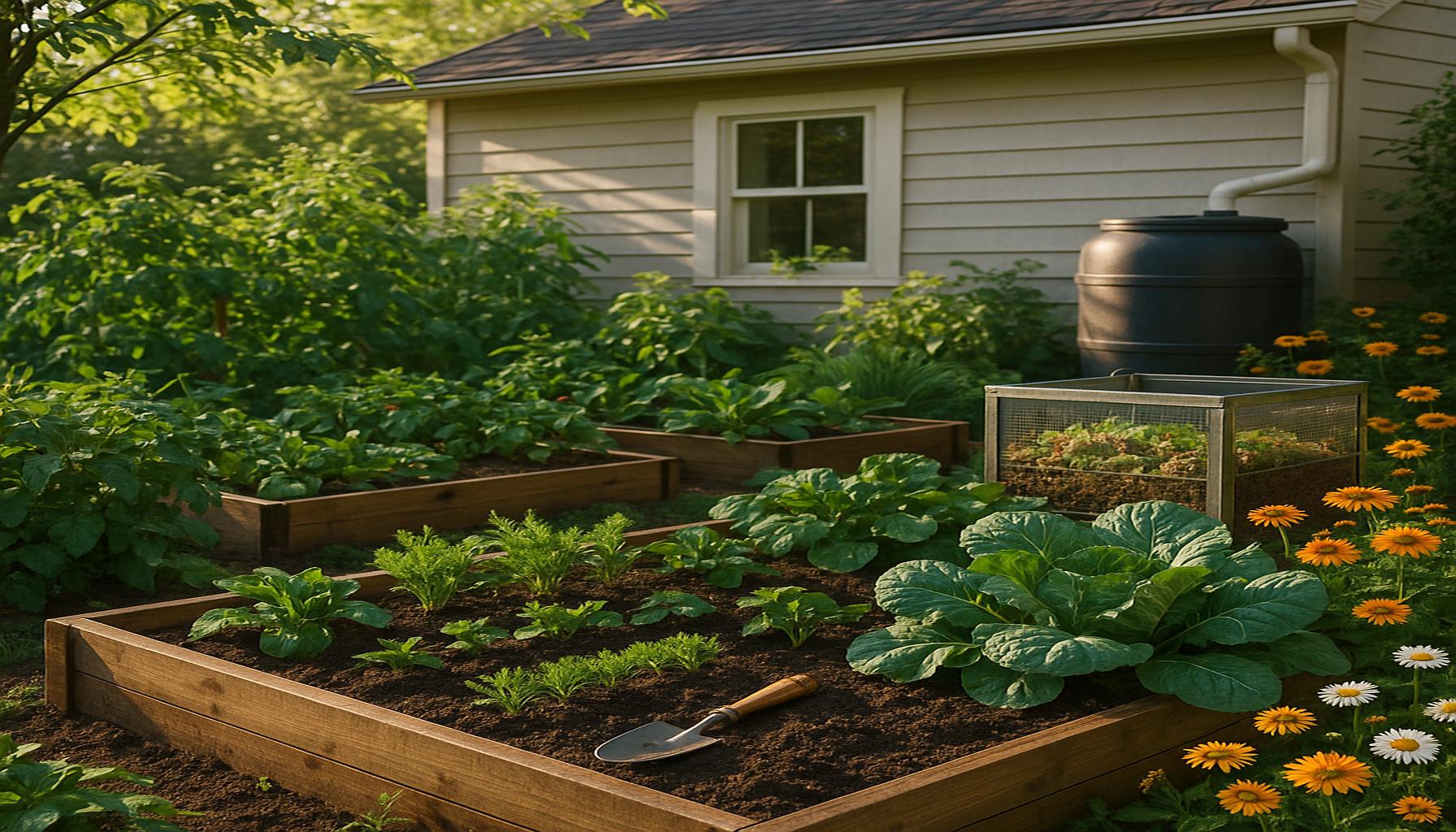Cultivating a Butterfly Garden: Plants that Attract and Sustain These Magical Creatures
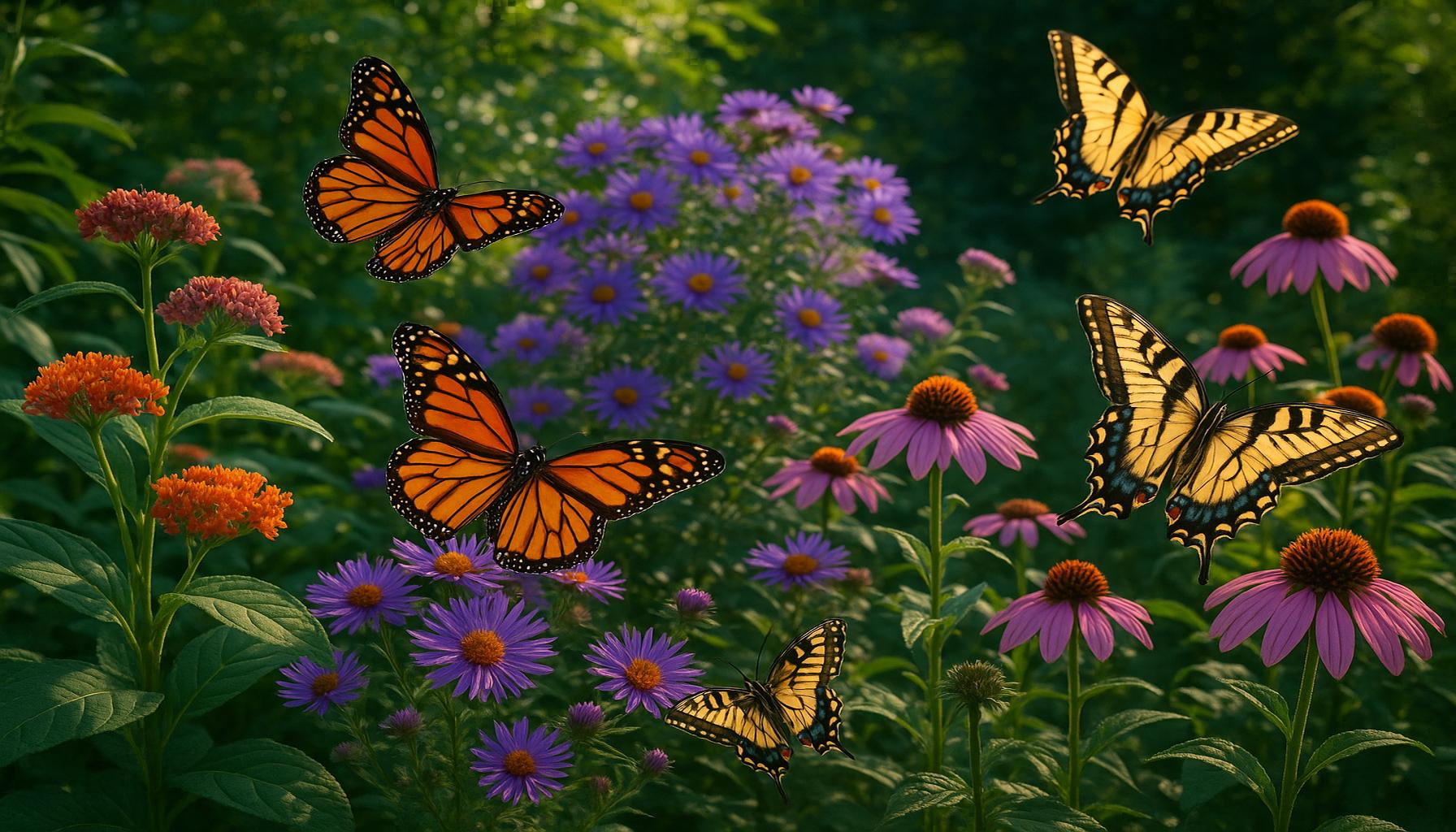
The Importance of Butterflies in Our Ecosystem
Creating a butterfly garden is more than just planting colorful flowers; it’s an initiative to foster a healthy ecosystem that supports the delicate balance of nature. Butterflies, as remarkable as they are, fulfill vital roles in our environment. They are key players in the pollination process, aiding in the reproduction of many flowering plants. This, in turn, supports the entire food web, as these plants provide sustenance for a variety of wildlife, including birds, bees, and other insects. Furthermore, butterflies serve as indicators of biodiversity, reflecting the health of their environments, making them important for ecological studies.
Choosing the Right Plants for Your Butterfly Garden
When you think about establishing a butterfly-friendly habitat, it is essential to incorporate a diverse selection of plants. By understanding the different classes of plants that attract and support butterflies, you can create a vibrant and sustainable garden.
- Nectar Plants – These blooms are crucial for adult butterflies, providing the energy they need to fly and reproduce. Some excellent examples include:
- Milkweed – Not only does it attract a variety of butterflies, but it is the sole host plant for the iconic Monarch butterfly.
- Butterfly Bush (Buddleja) – Known for its fragrant blossoms, this plant attracts various butterfly species and can thrive in many garden environments.
- Verbena – A favorite among butterfly enthusiasts, the small clusters of flowers bloom throughout the summer, offering continuous nourishment.
- Host Plants – These are essential for the caterpillar stage of a butterfly’s life cycle. Some notable host plants include:
- Asclepias (Milkweed) – A dual-purpose plant that offers nectar for adults and sustenance for caterpillars.
- Parsley – This herb not only adds flavor to your meals but also attracts Swallowtail caterpillars.
- Fennel – Similar to parsley, it’s another herb that serves both culinary and ecological purposes, supporting various caterpillar species.
By thoughtfully selecting the right combination of nectar and host plants, you will curate a flourishing habitat that invites butterflies to visit and thrive. Imagine stepping into your garden, surrounded by the gentle flutter of wings, knowing you played a part in this beautiful cycle of life.
The Broader Impact on Butterfly Populations
Creating a butterfly paradise in your outdoor space can significantly impact local butterfly populations. Neighborhood gardens can serve as critical waypoints in urban areas that often lack natural habitats. In the United States, the decline of various butterfly species due to habitat loss, pesticides, and climate change underscores the urgency of such initiatives. By planting a butterfly garden, you are not just beautifying your surroundings but actively contributing to the conservation of these invaluable insects. Join a growing movement of gardeners across the country devoted to nurturing the enchantment of butterflies, as together we help to secure a more biodiverse and harmonious ecosystem.
DISCOVER MORE: Click here for effective techniques
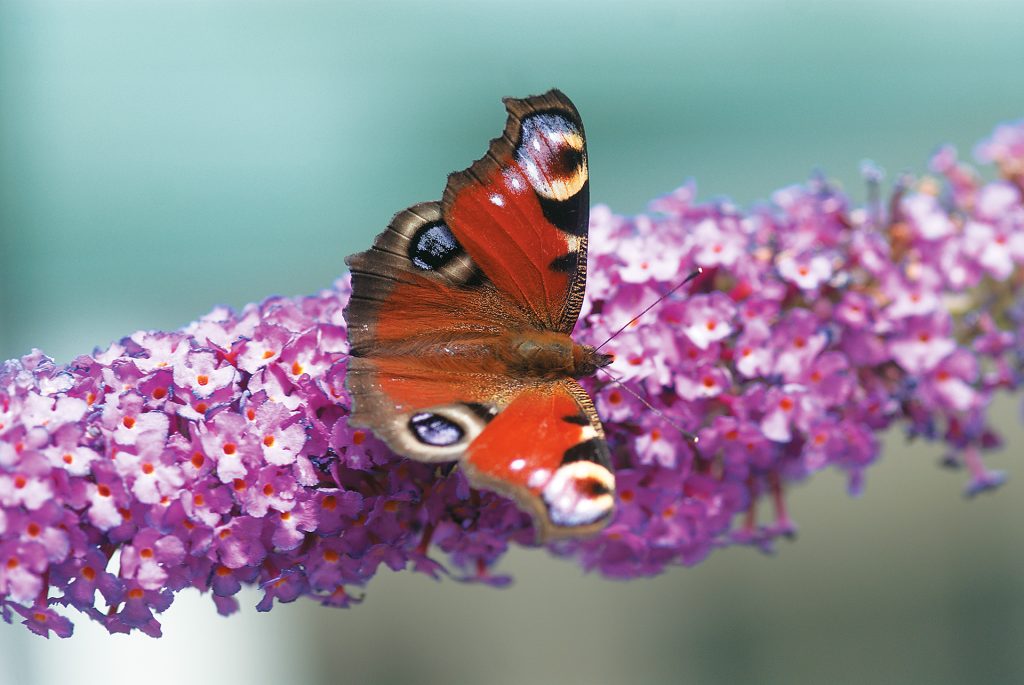
Creating a Butterfly-Friendly Habitat
As you embark on the journey of cultivating a butterfly garden, it is essential to prioritize creating a habitat that caters to the specific needs of these enchanting insects. Butterflies thrive in environments that offer a combination of sun, shelter, and access to water. When designing your garden, consider incorporating an array of flowering plants, trees, and shrubs, which will provide both nutrition and protection from predators.
- Sun Exposure – Butterflies are cold-blooded creatures that rely on sunlight to warm their bodies. Aim to position your garden in a location that receives at least six hours of sunlight a day. Open spaces with minimal obstructions will invite more butterfly visitors.
- Natural Shelters – Include elements such as shrubs, tall grasses, and native plants, which will provide a hiding place for butterflies, especially during windy days or storms. Adding plants with dense leaves helps offer a safe haven and encourages butterflies to linger longer.
- Water Sources – Butterflies need water for hydration and to thrive. A simple shallow dish filled with fresh water or a small puddling area with damp soil can serve to attract them. Ensure the water source is easily accessible without overwhelming them.
Furthermore, incorporating a diverse ecosystem encourages not only butterflies but also other beneficial insects and wildlife. By cultivating a garden that avoids synthetic chemicals and embraces organic practices, you can create an environment where butterflies can flourish. Consider using compost or organic fertilizers that feed your plants while safeguarding the natural order of the garden.
Seasonal Considerations for Your Butterfly Garden
It is vital to choose plants that bloom at different times throughout the growing season. This ensures a continuous source of nectar, benefiting both migrating and resident butterflies alike. For instance, early bloomers like Columbine and Dandelion can attract the first butterflies of spring, while summer perennials such as Echinacea and Black-eyed Susans will sustain them during the height of the season. Finally, late bloomers like Asters and Goldenrod will provide crucial nourishment as butterflies prepare for their migration or get ready to hibernate.
By aligning your garden design with the seasonal needs of butterflies, you create a more inviting sanctuary that caters to their lifecycle and supports their ongoing survival. With these insights, you are well on your way to designing a butterfly garden that is as beneficial for the enchanting insects as it is for you, creating a vibrant landscape that honors and nurtures one of nature’s most delicate wonders.
Cultivating a Butterfly Garden: Plants that Attract and Sustain These Magical Creatures
Cultivating a butterfly garden is not just about aesthetics; it is about creating a thriving ecosystem that supports these magnificent pollinators. The right plants play a pivotal role in attracting and sustaining butterflies throughout their life cycle. This entails selecting a diverse array of plants that provide food, shelter, and breeding grounds for various butterfly species.
Amongst the best plants to consider are nectar-producing flowers, which serve as food sources for adult butterflies. Some popular choices include coneflowers, milkweed, and lilac. These blossoms provide not only sustenance but also vibrant colors to enhance the visual appeal of your garden. For instance, milkweed is crucial for monarch butterflies, offering food for larvae and contributing to their population recovery efforts.
Besides food sources, it’s essential to include host plants that allow butterflies to lay their eggs. The caterpillars emerging from these eggs will need specific plants for nourishment. For example, parsley and dill attract swallowtail butterflies, while nettles support the larval stage of many other species. By planting a mix of these vital species, you create a caterpillar-friendly environment, ensuring a full life cycle of butterflies within your garden.
Moreover, butterflies thrive in sunny, sheltered spots; thus, planning the layout with ample sun exposure is crucial. Incorporating rocks and logs can provide resting spots and protection from harsh weather. Additionally, creating a water source, such as a shallow dish with pebbles, can prove beneficial for hydration. A carefully curated butterfly garden not only enhances your outdoor space but also plays a significant role in promoting biodiversity, making it a rewarding endeavor.
| Plant Type | Benefits |
|---|---|
| Nectar Plants | Attract adult butterflies; provide essential food sources. |
| Host Plants | Support caterpillar development and ensure butterfly reproduction. |
By focusing on a diverse range of both nectar and host plants, you can create an inviting sanctuary that encourages butterflies to thrive, enriching your garden with their enchanting presence.
DIVE DEEPER: Click here to discover how creative writing can enhance your communication
Choosing the Right Plants for Attracting Butterflies
When it comes to cultivating a butterfly garden, the right plant selection is crucial for attracting these beautiful pollinators and ensuring their survival. Different butterfly species have varying preferences when it comes to nectar and host plants. Understanding which plants are essential for both feeding and breeding can help create an inviting environment. Here are some categories of plants to consider:
- Nectar Plants – These are flowering plants that provide butterflies with the sugary liquid essential for their energy. Popular nectar plants include Milkweed, which attracts the iconic Monarch butterfly, and Butterfly Bush (Buddleia), known for its long flowering season and irresistible fragrance. Other excellent nectar sources include Joe-Pye Weed, Lantana, and verbena.
- Host Plants – Butterflies lay their eggs on specific plants, known as host plants, that provide food for their larvae upon hatching. For instance, the Swallowtail butterfly favors plants like Parsley, Carrot, and Fennel as hosts for their caterpillars. Similarly, Milkweed doubles as both a nectar and host plant for Monarchs. Ensuring a supply of these plants is essential for the complete lifecycle of butterflies.
- Native Plants – Incorporating native flora into your garden design is a significant advantage since these plants are naturally adapted to local conditions and support local butterfly populations. Native species generally have longer blooming periods and are more resistant to pests and diseases. Examples include Coneflower (Echinacea), Black-eyed Susan (Rudbeckia), and Bee Balm (Monarda).
Furthermore, a garden that celebrates biodiversity can host a more extensive variety of butterfly species. The introduction of fragrant herbs like Lavender, Thyme, and Mint can attract not only butterflies but also bees and other beneficial insects, creating a vibrant ecosystem. When more species flourish in a garden, it creates a lively atmosphere that appeals to butterflies as well.
Designing with Diversity
When planning your butterfly garden, consider layering the plants to create diverse habitats. Taller plants can serve as the backdrop, providing shelter, while shorter plants can fill in the front. This vertical variation not only enhances visual interest but also benefits butterflies by creating different microhabitats within the same garden space.
Grouping plants in clusters rather than spreading them out will attract more butterflies. For example, planting a small patch of Purple Coneflower surrounded by Milkweed will create a concentrated food source that draws in more visitors compared to having a single plant scattered across the landscape. Additionally, colorful flowers with platforms for landing, such as Zinnia and Cosmos, further appeal to butterflies.
Don’t forget to consider the overall design and maintenance of your butterfly garden. Mixing perennials with annuals ensures continuous blooms while offering seasonal variety. Regularly deadheading spent flowers will encourage new blooms and keep your garden in constant appeal throughout the growing season.
By thoughtfully selecting and designing a plant palette that meets the needs of butterflies, you can create a magical refuge for these exquisite creatures. Making conscious choices about which plants to include not only beautifies your outdoor space but also contributes to the health of the environment by supporting butterfly populations and their critical role in pollination.
DON’T MISS: Click here to dive deeper
Conclusion: Creating a Butterfly Haven
In summary, cultivating a butterfly garden is not only a rewarding endeavor but also an important contribution to preserving biodiversity. By carefully selecting nectar plants, host plants, and native species, you create a vibrant ecosystem that invites these enchanting creatures into your outdoor space. Each plant plays a vital role, providing food and habitat that supports butterflies throughout their lifecycle. As you nurture your garden, you contribute to the health of local ecosystems and promote the essential pollination activities that sustain our food supply.
Beyond mere aesthetics, a butterfly garden serves as an educational tool—offering a firsthand glimpse into the fascinating life cycles of butterflies and encouraging a deeper appreciation for nature. Engaging with this process not only enriches your gardening experience but also fosters a connection with the broader environment, advocating for conservation efforts.
As you embark on this journey, remember to cultivate diversity in your garden’s design, creating layered habitats that attract a variety of species. Incorporating a mixture of plants with continuous blooms will ensure a thriving environment from early spring through late fall. By combining beauty and ecological responsibility, your butterfly garden can transform into a living tapestry of color and life, inspiring others to follow suit.
So grab your gardening tools and get started—your butterfly oasis awaits, ready to bring joy, wonder, and ecological support to your backyard. With each fluttering visitor, you’ll witness the magic of nature unfolding right before your eyes, proving that even small efforts can lead to significant ecological impacts.
